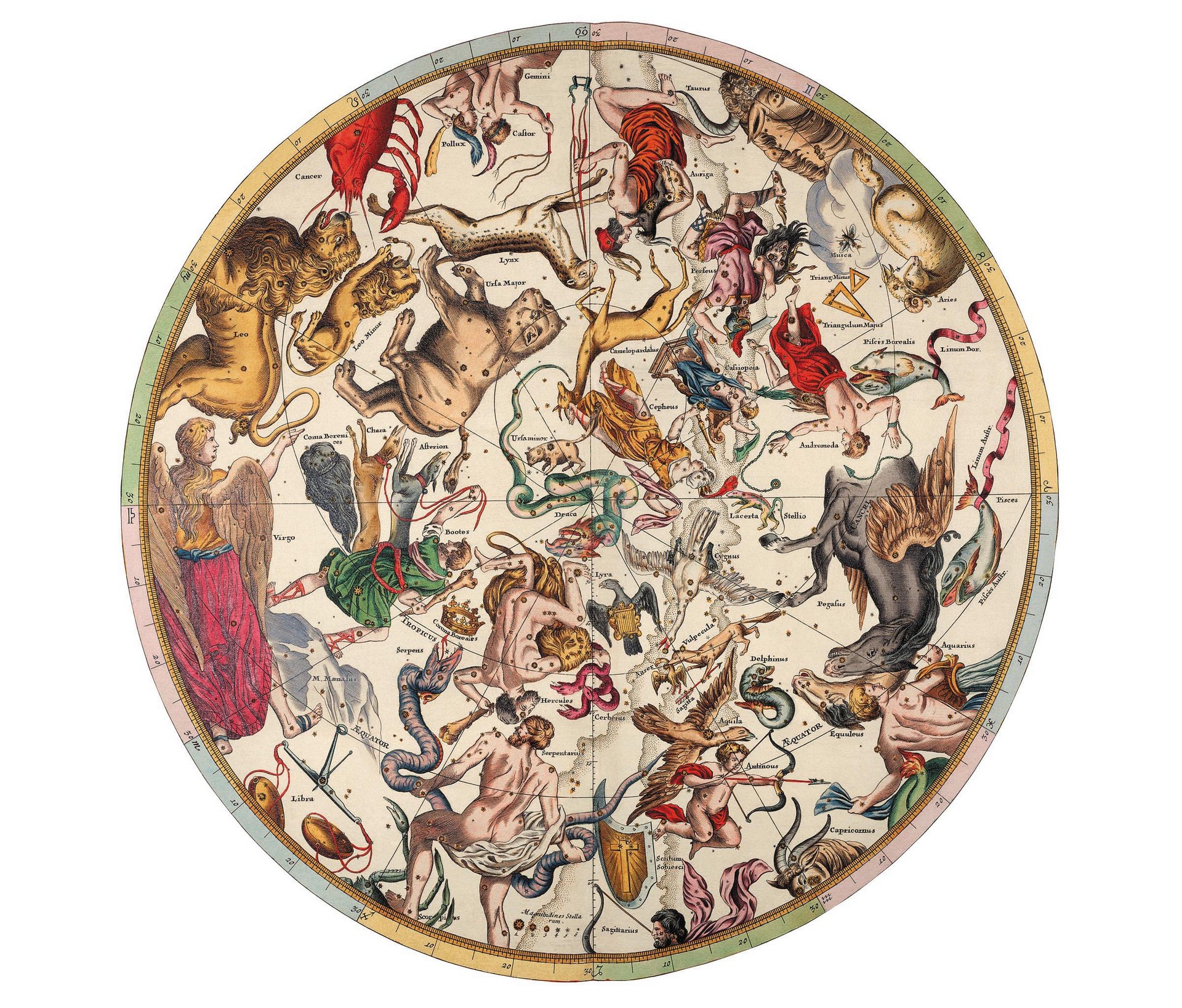Names and Designations of Stars
The naming of stars is mostly historical.
And, the designations given to stars is not only historical but confusing because there are several overlapping/competing systems, and some are incomplete.
Various Designations for 2 Stars
Bellatrix (a star in Orion)
1) Assigned the lowercase Greek letter gamma: 𝜸
Examples: 𝜸 Ori or 𝜸 Orionis ***
2) Assigned the number designation: 24
Examples: 24 Ori or 24 Orionis
3) HD 35468
4) HIP 25336
5) NSV 1972
6) TYC 113-1856-1
Sirius (a star in Canis Major)
1) Assigned the lowercase Greek letter alpha: 𝛂
Examples: 𝛂 CMa or 𝛂 Canis Majoris ***
2) Assigned the number designation: 9
Examples: 9 CMa or 9 Canis Majoris
3) HD 48915
4) HIP 32349
*** The abbreviation for these constellations and a difference
in the spelling is explained on the 88 Constellations page.
Explanations for the Above Numbers 1 through 6
1 • Greek Letters
Greek letters were assign by Johann Bayer (1572–1625) to the brighter stars within each constellation visible from the Northern Hemisphere in his 1603 Uranometria celestial atlas. They began anew with each constellation and assigned in order of brightness. For a few constellations, he ran out of the 24 Greek letters of that alphabet and used lowercase Roman letters (except he used capital A so it would not be confused with alpha which often looks like the Roman lowercase a). So, the brightest star in each constellation received the lowercase Greek letter alpha (𝜶). There are no Greek letters assigned to the constellations in the “deep” southern hemisphere because Bayer charted the constellations from his northern hemisphere location in Germany. A few other historical astronomers continued to assign Greek letters to the stars in the southern hemisphere after Bayer. The two examples show the use of the assigned Greek letter with the 3-letter abbreviation of the constellation name and the use of the Greek letter with the Latin Genitive of the constellation name. See farther below for a discussion on the Latin Genitive. See the Greek alphabet at the end of this page.
2 • Number Designations
John Flamsteed (1646-1719) had the idea of designating stars in each constellation using numbers and assigning those numbers from west to east, not by brightness. However, he never fully engaged in this “project” so the Flamsteed numbers that we use today are actually from Jerome Lalande (1732–1807) assignment in his 1773 Éphémérides des mouvemens
célestes star atlas. The assignment of numbers begin anew with each constellation.
The two examples show the use of the assigned Flamsteed number with the 3-letter abbreviation of the constellation name and the use of the Flamsteed number with the Latin Genitive of the constellation name. See farther below for a discussion on the Latin Genitive.
3 • HD Catalogue
The Henry Draper Catalogue (HD) is an
astronomical star catalogue originally published between 1918 and 1924, and which has
been expanded ever since to include about 360,000 stars as faint as magnitude 11
(remember, our naked eyes can see about 6,000 stars and as faint as magnitude 6). The numbering is
sequential from west to east starting at the Right Ascension of 0h (zero hours), which is
the “line” where the Vernal Equinox starts. HD1 is a 7.42 magnitude star in the
constellation Cepheus.
4 • HIP Catalogue
HIP stands for Hipparcos and this 1997 catalogue was created
from the Hipparcos satellite launched in 1989 and operated until 1993. The Hipparcos
Catalogue is a high-precision catalogue of more than 118,000 stars. HIP 1 is a 9.1
magnitude star located in the constellation of Pisces. The stars in this
catalogue are numbered sequentially from west to east starting at the Right
Ascension of 0h (zero hours), which is the “line” where the Vernal Equinox
starts.
5 • TYC Catalogue
The TYC catalogue or Tycho catalogue lists more than 2.5
million stars with data collected from the Hipparcos satellite (1989 to 1993).
The numerical designation system is unique. It divides the sky into 9537
regions and then numbers the stars in each region (separated by hyphens). There is most often an annotation with the number 1 at the end of designations.

A closeup of Orion's belt from Johann Bayer's 1603 Uranometria star atlas. The three belt stars were assigned the Greek letters zeta (𝜻), epsilon (𝜺) and delta (𝜹). Orion has many brighter stars. In this image the Roman letters of b and p were used to designate two of the stars because Bayer used up the 24 letters of the Greek alphabet. Click on the image to see the whole constellation of Orion from Uranometria.

Johann Bayer (1572–1625) was a German lawyer. There were no professional astronomers during his time—astronomy was his passion.


John Flamsteed (1646–1719) was an English astronomer and first Astronomer Royal of the Royal Observatory in Greenwich (next to London).
Jerome Lalande (1732–1807) resided in Paris and was quite a character—most people would have found him interesting.

